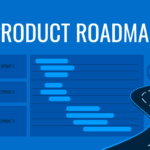What Is the Product Development Cycle?
The product development process involves taking an initial concept of a product to its market release and beyond. It inculcates multiple stages such as idea generation, validation, prototyping, product development process and launch followed by continuous upgradation based on user reviews.
Also, engaging with new product development services can help streamline each of these phases to ensure a successful outcome.
The cycle assures the manufacturers and developers to meet market requirements and provide market competitive prices and features to be in the list of customer preferences.
Numerous departments are involved in the development cycles of a company like product managers, developers, designers, testers and others etc.
What Are the Product Development Cycle Stages?
There is no definite description or definition about the product development cycle. Also there are no prescribed stages of the cycles. Businesses agree that the number of stages vary depending on the requirement of the product development process. There is no rule of a thumb where the process ends or the next starts.
Another point of disagreement between the developers or business is about the cycle that lasts as far as the product is released in the market. The companies that have concrete plans believe that cycle continues even after the launch and includes improvement that is continued over the period of time to make sure the product meets customers requirements.
Below we have defined the process in seven stages of the product development which is included in the development of every product. You can use these steps to create your own product development strategy.
Stage 1: How to Develop a Winning Idea
This stage to brainstorm your product idea. The product team will analyze user problems and provide solutions in the form of products according to user persona. During this phase several ideas are generated by the team.
Stage 2: Using Data and Metrics to Validate Your Product Concept
By the end of this first stage the team has numerous ideas. For the product concepts. The aim is to narrow down the list to one product that is worth hitting the sales ground. There are several ways of idea screening and identifying which is more viable.
For instance a consistent set of criteria must be set to analyze each idea considering the pros and cons of each one of them. It will be easier to weigh the score which aligns with your business goals and suit the consumer needs too.
Stage 3: Creating a Prototype: Key Steps to Bring Your Product to Life
For companies who deal in software developments, the engineering team can draft a simple mockup of the application. The wireframe can be developed to idealize the product and to build a physical prototype. This can be given to a small group of customers for their feedback.
Stage 4: Powerful Messaging for a Successful Product Launch
Together with building and sharing prototype, the production team will coordinating with the marketing team to create product marketing strategy which includes:
- Formulating the product’s value proposition
- Creating tools and materials for the sales department
- Establishing marketing and advertising campaigns
Meanwhile the developers build a prototype or mockup, the marketing team can simultaneously work on material and product messaging. The production department must immediately share the focused customer feedback with the marketing team to align them with the most useful features of the product as identified by the focused group.
Stage 5: Developing a Market-Ready Product
Once the focused group feedback is acquired about the prototype, the team can now be given a green signal for building a minimum viable product (MVP).
This is not a full featured product which was envisioned by the team during the brainstorming stage.
The team will now build out the product to deliver the MVP as quickly as possible. Once the company puts the working version of the product to the user’s hand sooner it accumulates the customer feedback for further improvement of the product.
Stage 6: Releasing the Product
After MVP is developed and tested, the product is ready to be released in the market. The MVP helps company acquire crucial insight at once which includes:
- The level of market interest (and whether it is more or less than the company’s research suggested).
- The variety of buyer or user personas opting for the product (and whether or not these are the people the product team analyzed would show the most interest).
- How real users respond to the product (and whether or not this data aligns with the company’s predictions).
The marketing team has likely been running a campaign to generate interest at this point of time.
The sales department must be aware about the possible prospects about the availability of product in the coming days.
Stage 7: Enhancing Product Features
The real-world back is ready from the early users to further improve the product performance.
The team will utilize the data and repeat the above stages for enhancement and modification. As for example stage 5 is repeated for building new functionality and stage 6 is repeated b to update the product after user feedback analysis. And then returning stage 7 to further optimize the user experience and making the product a better version then the previous one.
The product development cycle is an ongoing process and does not end once the product hits the market. Product teams should be ready to further enhance user experience even after its release.
Key Takeaways
In conclusion, the product development lifecycle is a dynamic and ongoing process that extends beyond just the product launch. By continuously refining and enhancing the product based on user reviews, companies can assure long-term success and customer satisfaction.
Whether you’re developing software or physical products, following a systematic approach across all stages—from ideation to post-launch enhancements—will help you stay competitive and up-to-date to market demands.










